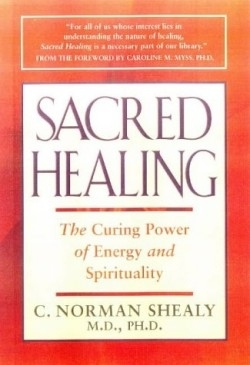Sacred Healing
The Curing Power of Energy and Spirituality
To have a medical doctor address the sacred aspects of healing is either a courageous act on the part of Shealy or a sign of our times—that the medical establishment is opening up to the realities that tremendous numbers of the American population seek health advice and healing in places other than their offices and hospitals. It is perhaps time to take another look at healing and its deeper, more sacred underpinnings. The foreword by popular medical initiate Caroline Myss reminds readers of the ancient texts describing the art of healing as a divine process.
Doctor, researcher and author of several books, Shealy begins by defining sacred healing historically, recapping religious and other sacred approaches to healing. He revisits the Hippocratic Oath, allowing contemporaries to see easily what conflicts can and do arise in adhering to it in modern times. Shealy ably weaves the ancient and modern approaches dealing with his subject, bringing readers up-to-date with well-known healers such as Ostad Hadi Parvarandeh, an Iranian-born healer of remarkable ability. Shealy was able to extensively question Parvarandeh on his ideas and understandings, as well as to document numerous situations and testimonials concerning his healings.
Shealy maintains that having a spiritual outlook is the primary basis for healing and includes a simple Spiritual Attitude Inventory. He discusses the health consequences of emotions, attitudes and behaviors, asserting: “The key to good health is attitude… Relaxation, visualization, and meditation are tools for developing spiritual values.” Shealy also explores the curing power of energy. The studies of electromagnetic fields and its framework tie into acupuncture for remarkable results.
In some regards, though, Shealy offers these hopes of greater health through new techniques, technical assistance, water and electrotherapy, but without supplying references. Despite this and some weakly argued issues, a large audience will still enjoy this book. It strikes a chord that contemporary doctors often overlook in their work.
Reviewed by
Sophia Tarila
Disclosure: This article is not an endorsement, but a review. The publisher of this book provided free copies of the book to have their book reviewed by a professional reviewer. No fee was paid by the publisher for this review. Foreword Reviews only recommends books that we love. Foreword Magazine, Inc. is disclosing this in accordance with the Federal Trade Commission’s 16 CFR, Part 255.

